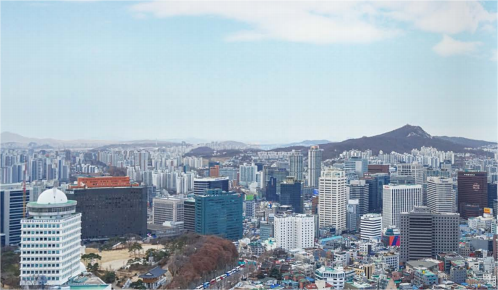In Focus | World Population Day: To Leave No One Behind, Count Everyone
Today is the World Population Day.
This year, the theme of the World Population Day is “To Leave No One Behind, Count Everyone”. Over the past three decades, societies around the world have made remarkable progress in improving population data gathering, analysis, and use. However, the most marginalized communities remain underrepresented in data, profoundly affecting their lives and well-being.
“investing in data collection is important to understanding problems, tailoring solutions, and driving progress,” said UN Secretary-General António Guterres. Cities, as population gathering areas, need to fully adopt new technologies to collect and analyze population data and seek solutions to population problems.
This issue of In Focus will introduce four outstanding urban innovation cases of the Guangzhou Award, illustrating how they use data collection and analysis methods to address diverse population issues, thereby benefiting everyone's life.

The metropolitan municipality of Kahramanmaras has a population of 1.15 million, among which nearly 100,000 are over the age of 65. For this age group, especially those with mobility challenges, self-care is also a challenge. Within the framework of the national “Yades 2016 Smart Elderly Care and Coordination Centre Project”, the municipality is taking care of its senior residents with this initiative.
The Smart Elder Care System is an intelligent follow-up and call system installed in the homes of residents of 65 years of age or above. In the event of an emergency, such as fire, natural gas leak, smoke, or flood, the system will automatically convey the information to the Smart Elder Care Call Centre, which is staffed with trained personnel all day long. In addition to this automatic detection and reporting system, the residents can use the emergency button as well to report any health crisis or injury.

Songpa, with a population of over 680,000, is a district located in southeast Seoul. With an aging population, the district expected a surge of mortalities from chronic diseases as well as healthcare expenses. Notably, the medical expenses for hypertension in Songpa increased by 549% from 2006 to 2010. To counter this trend, Songpa implemented the Smart Doctor Initiative.
This project aims to establish an ICT-based public service system for health management. 50 smart healthcare zones and unmanned mobile kiosks were set up for citizens to enjoy free healthcare services, including measurement of weight, body composition, and blood pressure. "Health managers" and the "health inspector generals" were selected from the community to work as project operators, who were responsible for carrying out publicity work, monitoring operations, and collecting community feedback.

Iztapalapa is one of the largest municipalities in Mexico City. 43% of its population lives in poverty, and 23% works in the informal economy. Socio-economic and territorial inequalities are key challenges among the local population.
The UTOPIAS initiative is a strategy to deepen social and urban transformation that addresses the structural socio-territorial inequality of the municipality of Iztapalapa via the regeneration of deteriorating public spaces and the construction of a system of large, comprehensive, high-impact public facilities that promote human rights and well-being of communities, with a focus on the equitable distribution of public spaces and facilities, which provide free social, cultural, sporting and recreational activities and services that are open to people of all ages.

The Government of Bontang City realizes that efforts to protect the rights and empower persons with disabilities will only be achieved if they have accurate and up-to-date data and information regarding persons with disabilities through name-by-address data collection. Therefore, the Government of Bontang City has developed a geospatial-based data collection for persons with disabilities integrated with terrestrial space in mapping the variety of disabilities and the types of needs of persons with disabilities.
The initiative involves using geographic information system-based mapping technology in data collection and monitoring. It collects data on smartphones and conducts online monitoring through WebGIS. Data have been collected digitally and the results are displayed directly on a map on WebGIS so that data on persons with disabilities becomes transparent and accountable.


 In Focus | Innovative Education, Empowering Futures
In Focus | Innovative Education, Empowering Futures City Stories | How Pakistan’s energy revolution can power affordable, reliable electricity for all
City Stories | How Pakistan’s energy revolution can power affordable, reliable electricity for all In Focus | Collaborative Governance, Sustainable Cities
In Focus | Collaborative Governance, Sustainable Cities




















 Tel: +86 020 3780 4434
Tel: +86 020 3780 4434 Email: info@guangzhouaward.org
Email: info@guangzhouaward.org Address: Rm 1609, FuLiXinTianDi, No.307 Guangzhou Dadao Zhong, Yuexiu District, Guangzhou, Guangdong, 501600, PRC
Address: Rm 1609, FuLiXinTianDi, No.307 Guangzhou Dadao Zhong, Yuexiu District, Guangzhou, Guangdong, 501600, PRC




